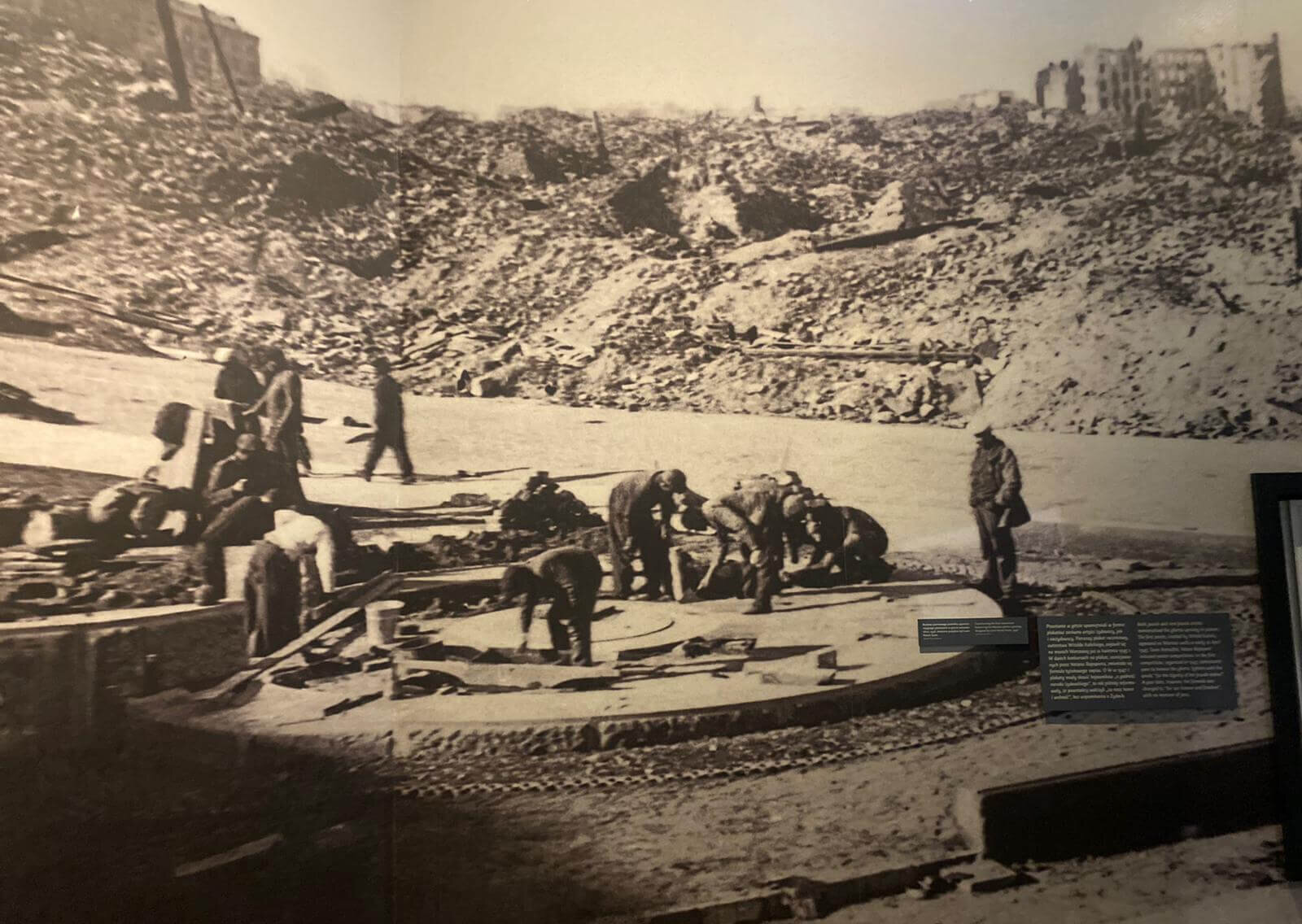To memorialize their salvation, survivors of the Warsaw Ghetto built a sewer
The Warsaw Ghetto Survivor’s Memorial is designed to look like a sewer — once the source of weapons, of food, of information for Jews stuck in the ghetto.

The Warsaw Ghetto Survivor’s Memorial under construction Photo by Nora Berman
WARSAW — Experiencing the Holocaust in Warsaw is largely an act of imagination.
The Warsaw Ghetto, once home at its height to approximately 460,000 Jews from 1940 to 1943, was obliterated by the Nazis by fire after the Warsaw Ghetto Uprising.
Today, the area has been transformed into an idyllic downtown neighborhood. Amid the cheerful mundanity of people walking their dogs and taking out the trash, I found it hard to connect with the history of this site.
Until I saw the Warsaw Ghetto Survivor’s Memorial.

You may be familiar with the towering sculpture nearby, the far more famous Monument to the Ghetto Heroes adjacent to the Museum of the History of Polish Jews.
But this unassuming monument was commissioned by the central committee of Polish Jews in Lublin just months after the Warsaw Ghetto was liquidated — and built by Jews who had survived both the Warsaw Ghetto and the Holocaust itself. It was the very first monument in Poland to the Warsaw Ghetto and to the Holocaust, built by those who returned in 1946 to memorialize their suffering.
The memorial itself is designed to look like an opening to the sewer.
“The sewer,” our guide Dima explained, “was chosen as it brought forth life in the Ghetto. It was the source of weapons, of food, of information traveling back and forth between the Aryan and Jewish parts of the city.”

The survivors chose to inscribe the memorial with the Hebrew letter “bet,” the first letter of the Torah. The base of this letter is thick, a solid foundation on which to build a new Jewish beginning. A small portion of the base — the “chupchik,” as our Israeli guide explained — is looking backward, rooted in the past and the memory of what the Jewish people have suffered. The rest of the base and the curved shape springing out of it, are open and facing forward – forward toward the future, and open to all.
The design is powerful in its simplicity: “It’s something real,” a participant shared with me afterward. “This design is what they chose.”
Those in the delegation who had earlier scoffed at the idea of Jewish life in Poland post-WWII were largely silent. They expressed far greater interest in — and offered possible interpretations to — the larger, more famous “Monument to the Ghetto Heroes” nearby, a looming work that depicts Jews beaten down, broken and barefoot, trudging to their deaths with anonymous soldiers at their backs.
Jewish death is impossible to extricate from the history of Jews in Poland. Yet there were centuries of vibrant Jewish artists and merchants and scholars and rabbis who made their lives here.
The Monument to the Ghetto Heroes embodies a desire to remember that Jewish life while simultaneously remembering those who fell defending it.
This may not satisfy the anger of my fellow participants, but for me, this monument instantly connected me to the experience of the Jews who lived in the Warsaw Ghetto.






















